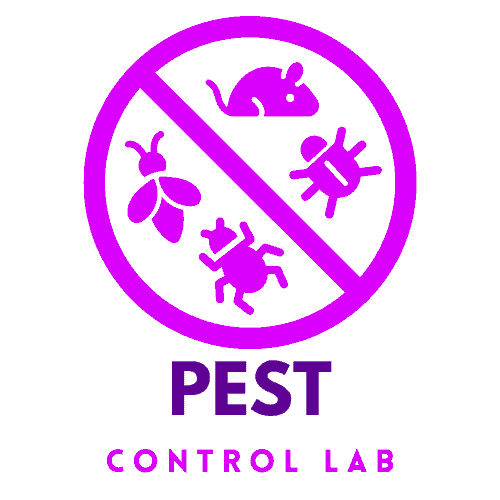Pests: The Hidden Health Hazards of Household
Introduction
Imagine lying in bed at night, only to hear the faint scuttling of insects or the telltale squeak of a mouse in the walls. It’s not just a nuisance; it’s a health hazard. Pests, from tiny bed bugs to stealthy rodents, are more than uninvited guests in our homes. They are carriers of diseases, triggers for allergies, and sources of contamination. Understanding these common household pests’ health risks is crucial for our well-being. This article sheds light on the unseen dangers lurking in our homes and how we can safeguard our health.
Types of Pests and Associated Health Risks

Our homes can harbor a variety of pests, each bringing its own set of health risks. Let’s start with rodents, like mice and rats. These creatures can spread diseases like Hantavirus and Salmonella through droppings and urine. They’re also known for biting, which can lead to rat-bite fever, a potentially fatal illness. Next, consider insects such as cockroaches. These critters are not just unpleasant to look at; they are allergen carriers and can exacerbate asthma, especially in children. Their presence can also spread E. coli and Salmonella as they scavenge through garbage and sewage.
Then there are bed bugs, tiny yet troublesome. While they don’t transmit diseases, their bites can cause allergic reactions, itching, and sleep disturbances. Mosquitoes, perhaps the most infamous of pests, are vectors for serious diseases like Zika, West Nile, and malaria. Ticks, too, pose a significant threat as carriers of Lyme disease and Rocky Mountain spotted fever.
Mites, although less visible, can provoke skin irritations and allergic reactions. Dust mites, in particular, are notorious for triggering asthma and allergic symptoms.
Lastly, let’s not forget about flies. These pests can spread a wide range of diseases, including food poisoning and dysentery, as they move from filth to food.
The risks associated with these pests underscore the importance of pest control and hygiene in our daily lives. It’s not just about discomfort; it’s about maintaining our health and safety.
Real-Life Examples of Pest-Related Health Issues

The health risks of pests aren’t just theoretical; real-life incidents underline their severity. Consider the case of a family in Texas who experienced severe respiratory issues due to a hidden rat infestation. Their home was overrun by rodents, unknowingly spreading Hantavirus, a severe respiratory illness. It wasn’t until they noticed physical symptoms and called in pest control that the source of their health problems was discovered and addressed.
Another alarming example is the widespread bed bug infestations in urban apartments. A New York family suffered extensive allergic reactions due to bed bug bites, leading to sleepless nights and immense psychological stress. Despite multiple exterminations, the persistent nature of bed bugs made it a long-term battle, highlighting the need for comprehensive pest management strategies.
Mosquitoes, too, have been responsible for outbreaks of serious diseases. A notable incident occurred in Florida, where a spike in Zika virus cases was directly linked to mosquito infestations. This outbreak led to a public health emergency, with extensive efforts to control the mosquito population and educate the public about prevention.
A less-known pest, the deer tick, caused a significant health scare for a family living near a wooded area in Connecticut. They were diagnosed with Lyme disease, a bacterial infection transmitted by tick bites. This incident underscores the importance of awareness and preventive measures in tick-prone areas.
These real-life examples illustrate the diverse and severe health risks posed by pests. They provide a stark reminder of the importance of being vigilant about pest control and the potential consequences of neglecting this crucial aspect of home maintenance.
Prevention and Control Strategies
Preventing and controlling pests is critical to safeguarding our health. First and foremost, maintaining cleanliness is crucial. Regularly cleaning floors and counters and eliminating clutter deprives pests of hiding places. Proper food storage is also essential; keeping food in sealed containers prevents attracting pests like rodents and cockroaches.
Sealing entry points is another critical step. This includes fixing cracks in walls, ensuring windows and doors fit tightly, and sealing gaps around pipes and cables. These measures make it harder for pests to enter our homes.
For mosquito control, eliminating standing water is vital. This can be as simple as regularly changing water in bird baths, repairing leaky outdoor faucets, and ensuring gutters function correctly. Using mosquito nets and repellents can also provide personal protection, especially in areas prone to mosquito-borne diseases.
Prevention involves personal precautions regarding ticks, such as using tick repellents, wearing long-sleeved shirts and pants in wooded areas, and regularly checking for ticks after outdoor activities. Creating tick-safe zones in your yard, such as clearing tall grass and using wood chips or gravel between lawns and wooded areas, can reduce tick populations.
For professional pest control, it’s essential to choose a reputable service. They can provide targeted treatments and advice specific to your home and the type of infestation.
Finally, educating yourself and your family about the signs of pest infestations and the importance of prompt action can prevent minor problems from becoming significant infestations. Awareness and proactive measures are the best defenses against the health risks posed by pests.
The Psychological Impact of Pests

Pests in our homes affect more than just our physical health; they also have a profound psychological impact. Imagine the constant anxiety of living in a home infested with bed bugs; the mere thought of these parasites feeding on you during your sleep can lead to severe mental distress. Many people report feelings of shame and embarrassment, fearing social stigma and isolation if others discover their plight.
Rodent infestations can evoke a deep sense of unease and fear, particularly in children. The sounds of scurrying and gnawing within walls can disrupt sleep and create a persistent feeling of being unsafe in one’s own home. In extreme cases, this can lead to phobias or obsessive behaviors related to cleanliness and safety.
The psychological effects extend to the aftermath of pest control as well. Even after an infestation is cleared, the fear of reinfestation can linger, leading to constant vigilance and anxiety. This can manifest in obsessive cleaning habits, reluctance to bring in second-hand furniture, or hesitancy to host guests.
Moreover, dealing with a pest infestation can be a stressful and overwhelming experience, especially when it involves extensive cleaning, disposing of infested items, and coordinating with pest control services. This process can be disruptive and emotionally taxing for the entire household.
Understanding these psychological impacts is crucial for a compassionate and comprehensive approach to pest management. It’s not just about eliminating the pests; it’s also about supporting the mental well-being of those affected.
Conclusion
The war against household pests is not just a matter of physical health; it’s a battle for the comfort and sanity of our living spaces. From the spread of diseases by rodents and insects to the psychological distress caused by infestations, the impact of pests is profound. We can protect our homes and health by understanding the risks, adopting preventive measures, and seeking professional help when needed. Let’s not underestimate these tiny adversaries; we arm ourselves with knowledge and vigilance to maintain a healthy, pest-free environment.






Thanks for sharing. I read many of your blog posts, cool, your blog is very good.